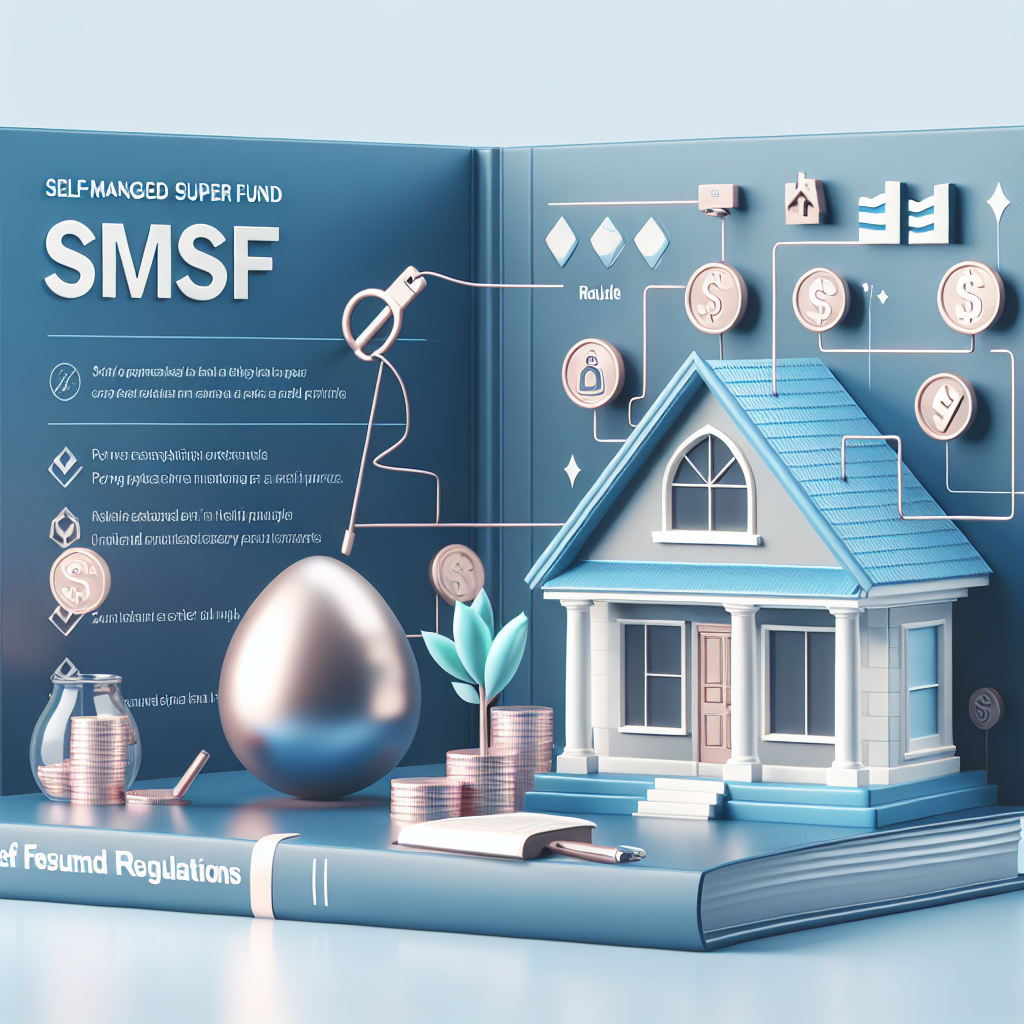When it comes to building wealth through your Self-Managed Super Fund (SMSF), property investments can offer substantial returns. However, behind those attractive yields lurks a significant yet often overlooked expense: land tax. As an SMSF trustee or property investor, understanding how land tax affects your super fund’s bottom line isn’t just good practice—it’s essential for protecting your retirement savings.
Land tax represents one of the largest ongoing expenses for SMSF property holdings, yet many trustees remain unaware of how dramatically these costs vary across different Australian states and territories. With each jurisdiction setting its own thresholds, rates, and exemptions, your SMSF could be paying thousands more in land tax simply because of where your investment property is located.
Understanding Land Tax for SMSFs: The Basics
Land tax is an annual state-based tax levied on the unimproved value of land above certain thresholds. For SMSFs that directly own investment properties, this tax applies just as it would to individual investors, albeit with some crucial differences that can significantly impact your fund’s returns.
Unlike individuals who might qualify for principal place of residence exemptions, SMSFs generally face the full brunt of land tax on their property holdings. This is because SMSF properties cannot typically be used as a primary residence by fund members or related parties under superannuation regulations.
“Many SMSF trustees are surprised to learn that their fund is subject to land tax at all,” explains financial experts. “They’re even more surprised when they discover how much these costs can vary from state to state.”
The calculation of SMSF land tax follows a tiered system in most states, with higher rates applying as land values increase. Importantly, land tax is calculated on the total land holdings within each state, meaning multiple properties owned by your SMSF in the same state are aggregated for tax purposes. This is a key consideration when calculating potential returns on SMSF property investments.
State-by-State Breakdown: SMSF Land Tax Regulations
New South Wales
NSW imposes some of Australia’s highest land tax rates on SMSFs. For 2025, the threshold sits at $755,000, meaning your SMSF only pays land tax on the value exceeding this amount. However, the rates escalate quickly:
- $100 plus 1.6% for values between $755,000 and $4,616,000
- $61,876 plus 2% for land valued above $4,616,000
For example, an SMSF owning Sydney property with a land value of $1,500,000 would pay approximately $11,920 in annual land tax—a significant drag on returns.
Victoria
Victoria operates with a lower threshold of $300,000 for 2025, but offers more gradual rate increases:
- $375 plus 0.3% for values between $300,000 and $600,000
- $1,275 plus 0.5% for values between $600,000 and $1,000,000
- $3,275 plus 0.8% for values between $1,000,000 and $1,800,000
- $9,675 plus 1.3% for values between $1,800,000 and $3,000,000
- $25,275 plus 2.25% for land valued above $3,000,000
A Melbourne SMSF property with a land value of $900,000 would incur approximately $2,775 in Victorian land tax.
Queensland
Queensland offers a more favorable land tax environment for SMSFs with a threshold of $600,000 and lower rates:
- 1% for values between $600,000 and $1,000,000
- $4,000 plus 1.65% for values between $1,000,000 and $3,000,000
- $37,000 plus 1.9% for values between $3,000,000 and $10,000,000
- $170,000 plus 2.25% for land valued above $10,000,000
An SMSF property in Brisbane with an $800,000 land value would generate a modest $2,000 land tax bill.
South Australia
South Australia has one of the lower thresholds at $450,000 but applies progressive rates:
- 0.5% for values between $450,000 and $723,000
- $1,365 plus 1.25% for values between $723,000 and $1,052,000
- $5,477 plus 2% for values between $1,052,000 and $1,350,000
- $11,437 plus 2.4% for land valued above $1,350,000
An Adelaide SMSF property with a $700,000 land value would attract approximately $1,250 in land tax.
Western Australia
Western Australia applies a threshold of $300,000 with progressive rates:
- 0.25% for values between $300,000 and $420,000
- $300 plus 0.9% for values between $420,000 and $1,000,000
- $5,500 plus 1.8% for values between $1,000,000 and $5,000,000
- $77,500 plus 2.67% for land valued above $5,000,000
A Perth SMSF property valued at $800,000 would incur approximately $3,720 in land tax.
Tasmania
Tasmania has a lower threshold of $50,000 but applies fixed rates:
- $50 plus 0.55% for values between $50,000 and $350,000
- $1,700 plus 1.5% for values between $350,000 and $750,000
- $7,700 plus 2% for land valued above $750,000
An SMSF holding Hobart property with a land value of $500,000 would pay about $3,950 in annual land tax.
Australian Capital Territory
The ACT uses a fixed-rate system starting from a $150,000 threshold:
- 0.54% for values between $150,000 and $275,000
- $675 plus 0.65% for values between $275,000 and $2,000,000
- $11,987.50 plus 1.1% for land valued above $2,000,000
An SMSF property in Canberra with a $600,000 land value would attract approximately $2,787.50 in land tax.
Northern Territory
The Northern Territory stands out as the only Australian jurisdiction that doesn’t impose land tax, making it uniquely attractive for SMSF property investments from a tax perspective.
Strategic Approaches to Minimize SMSF Land Tax Liabilities
Understanding the significant differences in SMSF land tax across states opens up strategic opportunities for fund trustees. Here are practical approaches to minimize your SMSF’s land tax burden:
1. Strategic Property Location Selection
Given the stark differences in land tax regimes, consider the tax implications when selecting investment locations. For example, an SMSF property in Queensland might save thousands in annual land tax compared to an equivalent property in New South Wales. While investment fundamentals should always come first, land tax can be a deciding factor between otherwise similar investment opportunities.
2. Structure Optimization
Some SMSF trustees utilize compliant trust structures to hold property investments. In certain circumstances, holding properties in separate entities can help minimize land tax through multiple threshold applications, though this must be approached carefully to maintain compliance with superannuation regulations.
“It’s crucial that any structure implemented by an SMSF complies with both tax law and superannuation regulations,” advises industry experts. “The potential savings must be weighed against additional compliance costs and complexity.”
3. Regular Valuation Reviews
Land tax is calculated on the unimproved value of land as assessed by state revenue offices. These valuations can sometimes be contested if they appear excessive. SMSF trustees should review annual land valuations and consider formal objections when appropriate, potentially saving thousands in land tax.
4. Strategic Asset Allocation
For SMSFs with substantial property holdings, spreading investments across different states can help minimize land tax through utilizing multiple state thresholds. This approach requires careful planning but can yield significant tax savings for larger funds.
5. Timing Property Acquisitions and Disposals
Since land tax is typically assessed based on ownership as of a specific date (often December 31st or June 30th, depending on the state), timing property transactions strategically around these dates can sometimes save a full year’s land tax liability.
Empowering SMSF Trustees Through Knowledge
At Aries Financial, we believe that empowering SMSF trustees through specialized knowledge is essential for optimizing investment outcomes. Understanding the nuances of SMSF land tax across different states represents one of many areas where expertise can translate directly into improved returns.
The significant variances in land tax liabilities across Australia mean that informed decision-making can save your SMSF thousands of dollars annually. These savings, when compounded over the life of your investment, can substantially impact your retirement wealth.
By approaching SMSF property investments with a comprehensive understanding of all costs—including often-overlooked expenses like land tax—trustees can make truly informed investment decisions aligned with their retirement goals.
“At the heart of successful SMSF property investing is a thorough understanding of all costs involved,” industry experts note. “Land tax often flies under the radar until the first bill arrives, sometimes shocking trustees with its impact on cash flow.”
The Importance of Specialized SMSF Advice
Navigating the complexities of SMSF land tax is just one example of why specialized SMSF advice is invaluable. As Australia’s trusted SMSF lending specialist, Aries Financial recognizes that property investment within superannuation requires unique expertise spanning taxation, superannuation law, and property markets.
The interplay between these areas creates both challenges and opportunities. For example, while SMSFs face land tax costs that might not apply to properties held personally (due to principal residence exemptions), they benefit from the concessional 15% tax rate on rental income and potential 10% capital gains tax rate for assets held longer than 12 months.
This complex landscape requires advisors who understand not just property investment, but specifically how property works within the SMSF environment. With proper guidance, SMSF trustees can make strategic decisions that optimize their fund’s performance while maintaining strict compliance with regulatory requirements.
Taking Action: Next Steps for SMSF Trustees
If you’re an SMSF trustee with existing property investments or considering adding property to your portfolio, understanding your fund’s land tax position is essential. Here are practical next steps:
Assess your current position: Review your SMSF’s land tax liabilities across all properties and identify opportunities for optimization.
Seek specialized advice: Consult with advisors who specifically understand SMSF property investment, including tax implications across different states.
Consider diversification: Evaluate whether your SMSF could benefit from geographic diversification to optimize land tax outcomes.
Plan for cash flow: Ensure your SMSF has adequate liquidity to meet land tax obligations, which can be substantial in high-value areas.
Stay informed: Land tax thresholds and rates change periodically, so regular reviews of your strategy are essential.
By partnering with specialists like Aries Financial, SMSF trustees can navigate the complexities of property investment with confidence. Our deep expertise in SMSF lending and investment strategy positions us to support trustees in building wealth through strategic property investments that account for all factors—including the often-overlooked impact of state-specific land tax regimes.
Understanding SMSF land tax across different states isn’t just about minimizing costs—it’s about making fully informed investment decisions that maximize the long-term growth of your retirement savings. With the right knowledge and support, your SMSF can thrive in the property market while efficiently managing its tax obligations.


